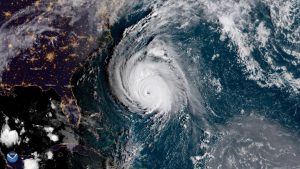
The PAST Fusion Cell can standup its Virtual Analytic Cell (VAC) and/or deploy boots-on-the-ground to any location for the purpose of collecting and analyzing news and social media data, observing Joint Information System and Center operations, news conferences and briefings. If a deployment is warranted, analysts can when possible conduct interviews with all parties involved.
The data gleaned from these incidents and events can be utilized to provide recommendations for preparedness doctrine and protective action decision-making. Emergency Management Communication Analysts can create case studies, identify training gaps, create expanded public affairs training and exercises, identify advanced and innovative technology needs. The analysis of this data can yield the framework for establishing best practices to maximize the effectiveness and efficiency of critical messaging. The PAST Fusion Cell’s first deployment was to Charlotte, North Carolina, in the wake of civil unrest (i.e., rioting and protesting) following an officer-involved shooting. The second deployment was in response to the Gatlinburg urban wildfires in Tennessee. Since then, the PAST Fusion has provided social media analysis and expertise for the following:

Hurricane Social Media Analysis
The Federal Emergency Management Agency (FEMA) National Integration Center (NIC) tasked Argonne National Laboratory (Argonne) with capturing and analyzing the communication of evacuation orders or recommendations for coastal and inland counties from official jurisdictional Twitter and/or Facebook accounts in support of the agency’s response to Hurricanes Harvey and Florence. This support provided a data-driven basis for Lessons Learned and Best Practices to enhance situational awareness and decision making in future events. The social media analysis products developed by Argonne provides Federal, state, local and tribal emergency managers with a tool that can be used to analyze, evaluate and improve emergency communication plans. The reports also look at key factors impacting communication for areas where socioeconomic factors can influence how messages reach their intended audience.

Support to Department of Energy
Argonne provides public affairs expertise to U.S. Department of Energy (DOE) and National Nuclear Security Administration (NNSA) headquarter and site offices, with a particular emphasis on social media as part of an emergency public information program. Recent tasks include development of a case study analyzing the use of social media following an accident at the Hanford Site in Washington, and subject-matter expertise for a proposed complex-wide study of the use of social media for emergency response. Ongoing technical assistance includes support to the Emergency Public Information Subcommittee; risk and crisis communication training and exercise support at DOE/NNSA sites around the country; and various special projects.
Support to Department of Homeland Security
The U.S. Department of Homeland Security (DHS) Science & Technology Directorate (S&T)’s Social Media Working Group for Emergency Services and Disaster Management recognizes the need to address digital and social media challenges. The mission of the SMWGESDM is to provide recommendations to the emergency preparedness and response community on the safe and sustainable use of social media technologies before, during and after emergencies. As members of the SMWGESDM, the PAST Fusion Cell @Argonne National Laboratory provides research-based and scientific modeling data, best practices and lessons learned to enhance SMWGESDM’s mission.

